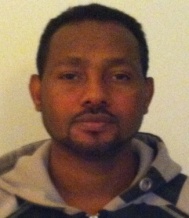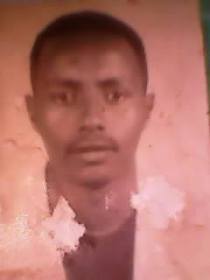
December 11, 2014 (Amnesty International) — On 5 and 6 December, security services in Addis Ababa arrested an estimated 90 people during attempts to stage a demonstration by a coalition of nine opposition political parties. The arrests are the latest manifestation of the authorities’ hostility towards the political opposition ahead of the general election scheduled for May 2015. The Ethiopian authorities must ensure the immediate and unconditional release of those arrested for peaceful participation in, or the organization of, the demonstration, and all others imprisoned in Ethiopia for the peaceful expression of their political opinion.
Amnesty International is concerned that in the period ahead of next year’s poll such instances of the authorities cracking down on political opposition will intensify.
The nine-party coalition was attempting to stage a demonstration in Addis Ababa’s Meskel Square on 6 December as the culmination of a series of activities calling for a free and fair election.
The exact number of people arrested has not been established, but the political parties involved report that around 90 people arrested in relation to the demonstration have appeared in court remand hearings in recent days.
The Semayawi (Blue) party, one of the coalition members, says that around 75 of its members and leadership were arrested, including its Chair, Engineer Yilkal Getnet, who is reported to have been injured as a result of beating by the police before he was arrested. The leaders of at least three other parties in the coalition were also arrested – Girma Bekele of the Omo People’s Democratic Union and Chair of the coalition, Erchafo Erdelo, Chair of the Kembata Peoples’ Congress and Alesa Mengesha, Chair of the Gedeo People’s Democratic Organization.
The other parties in the coalition are the All Ethiopian Democratic Party, the All Ethiopian Unity Party, the All Ethiopian National Party, the All Amhara People’s Organization and the Sodo Gordona Democratic Organization.
Two eye-witnesses told Amnesty International that there was a heavy federal police presence in Meskel Square on 6 December. Some would-be protestors were reportedly arrested on their way to the square. Another group was arrested shortly after leaving the Semayawi party office to walk to the square. The latter group was reported to have been beaten by police, resulting in a number of injuries.
The two groups are being detained in Sostegna (third) and Cherkos police stations.
The group detained in Sostegna police station, which numbers over 50 people, the majority of whom are Semayawi party members, appeared at Arada first instance court on 8 December, accused of participating in an illegal demonstration and attempting to overthrow the Constitution. They were remanded in custody until 22 December. 27 people detained at Cherkos police station were brought before a court in the Cherkos area, also on 8 December, accused of destroying public property in Meskel Square and remanded in custody until 15 December.
A group of six further Semayawi party members and two members of the All Ethiopian Unity Party, were arrested on 5 December after leaving the Semayawi office, and are being detained in Kotebe police station. They reportedly appeared in Yeka first instance court on the day of their arrest and were remanded in custody until 15 December.
The Semayawi party told Amnesty International it had informed the city administration of its intention to stage a demonstration, as required under the relevant proclamation, and had received a response informing the party it should not hold the demonstration, due to construction work in Meskel Square and a reported lack of security services to police the event. The response did not offer an alternative date or location. Semayawi states that due to this failure, it went ahead with its plans.
According to the Proclamation to Establish the Procedure for Peaceful Demonstration and Public Political Meeting (No. 3/1991), anyone planning to hold a demonstration must provide written notice to the relevant authorities 48 hours in advance, providing specifics of the nature, time, location and number of expected participants. The administrative office must provide a written response to the applicant within 12 hours if it is preferable that the demonstration be held at a different time or location.
The Ethiopian Constitution, the International Covenant on Civil and Political Rights and the African Charter on Human and Peoples’ Rights all oblige the Ethiopian government to respect, protect and fulfil the rights to freedom of expression, association and assembly. Under international law, any restrictions on the exercise of these rights may only be such as are demonstrably necessary and proportionate for specific reasons recognised as legitimate, and must not undermine the right itself. Despite these legal obligations on the Ethiopian government, thousands of Ethiopians have been arrested in 2014 alone for their involvement in protests.
The Ethiopian government’s intolerance of dissent is increasing apace ahead of next May’s general elections. Throughout 2014, as well as large-scale arrests of protestors, there have been multiple arrests of members and leadership of opposition political parties, as well as other dissenting voices.
The Oromo Federalist Congress opposition political party reported that between 350 and 500 of its members were arrested between May and July, with further arrests of party members continuing every month since then. In July, Yeshewas Asefa of the Semayawi party was arrested along with Habtamu Ayalew and Daniel Shebeshi of the Unity for Democracy and Justice (UDJ) party and Abraha Desta of the Arena Tigray party. The four were subsequently charged under the Anti-Terrorism Proclamation. Semayawi members Befekadu Abebe, a party official in Arba Minch, and Agbaw Setegn, a member from Gondar, both remain in Maikelawi federal police detention centre since their arrests in September and October respectively.
The Semayawi party has also reported numerous arrests of its members throughout the year in relation to protests or attempts to stage protests. Seven female members were arrested in March during a run to mark International Women’s Day in Addis Ababa, along with three male party members. They had been chanting slogans including “We need freedom! Free political prisoners!” They were released without charge after ten days. In late April, 20 members of the party were arrested while promoting and distributing flyers for a demonstration in Addis Ababa. They were released after 11 days.
The crackdown has also included the remnants of independent media in the country during the year. Seven independent publications were targeted in an orchestrated smear campaign in the state-owned media, alleging they had printed a number of articles which ‘promoted terrorism,’ denied the economic growth, belittled the legacy of Meles Zenawi, and other ‘transgressions.’ Subsequently over 20 journalists fled the country under threat of prosecution. Six bloggers from the Zone 9 collective and three independent journalists associated with the group were arrested in April, and later charged with terrorism offences. The arrests came just days after the group announced on social media the resumption of its activities, which included a programme of work leading up to the elections, such as voter education. In late October, after a trial that had lasted more than two years, editor Temesgen Desalegn was sentenced to three years’ imprisonment for ‘defamation’ and ‘inciting the public through false rumours’ in the now-defunct publication ‘Feteh.’
This series of events demonstrates that, despite the fact that since the 2005 elections the government has taken multiple steps to entrench its rule and suppress other political parties, to coerce voters, and to dismantle opposition and dissent, the authorities still are intent on stifling any possibilities of political opposition ahead of May’s poll.
Amnesty International is concerned there will be further human rights violations ahead of the elections, including arbitrary arrests and the detention of opposition political party members, and possible violence against opposition party members and demonstrators.
In the lead-up to the 2015 elections, the government must ensure the ability of all Ethiopians to exercise their right to hold and express political opinions without fear of arrest or other repercussions, and must immediately remove unlawful restrictions on free and open political participation, including restrictions on the independent media, civil society organisations and opposition political parties. The government should also issue clear orders to security services to cease their harassment and arrest of persons peacefully expressing opposition to the government, including those campaigning for opposition political parties.
Anyone who has been arrested based solely on their activities as a member of an opposition political party, their peaceful expression of dissent or of their political opinion, their journalistic activities or their participation in a peaceful protest, must be immediately and unconditionally released.
Source: Amnesty International

